#witchy celebrities
Explore tagged Tumblr posts
Text
ASTROLOGY OBSERVATIONS PT.10

THESE NOTES ARE ONLY A STUDY OF MINE AND HAS/HAS NOT BEEN PROVEN YET, SO IF IT DOES NOT RESONATE WITH YOU, FORGIVE ME AS IT WAS ONLY A STUDY/OBSERVATION OF MINE.
I DO NOT PLAGIARIZE, COPY OR REWORD ANY OF MY FELLOW ASTROLOGY OBSERVERS POSTS AND I DEMAND THE SAME IN RETURN.
This also has an 18+ touch here and there so you can skip if you're uncomfy with such themes or YOU ARE A KID.

•I've observed that those who are born natural actors have strong Moon influence in their chart. This is because moon is responsible for our emotions and our ability to handle our emotions. Our ability to express what's deep within our mind and heart [expression does not just have to be verbal (mercury)].
So a native with strong Moon influence on the ascendant (esp. harsh aspects), or even venus and even having moon aspect asteroids like Actor or Talent can make us understand that they are born actors. These people become amazing and unique artists in any area of expression and emotions.
Even people with Moon in the 5th house, 10th house and 11th house become naturally born actors. These people are naturally very talented in anything expressive and informal (informal, in the sense, what allows them to expand and not be restricted, things that involve thinking outside the box and not having to curb down their talents).
I've noticed so many all rounders have this placement. I have also observed that people having moon aspect chiron or in water signs can make the person use their hurt emotions to better perform in acting (esp. when they have moon in the 10th house). Ex: Alia Bhatt, Tom Hanks, Vikrant Massey.
Even natives having moon in a water/air signs can become the most talented actor if they also have 5th house placements. Ex: Kamal Haasan, Rajnikant.
Examples:
From left to right:
1st row: Zendaya, Vikrant Massey, Kamal Haasan
2nd row: Lady Gaga, Tom Hanks, Alia Bhatt







• Saturn in the 5th house natives find it very hard to open up their heart easily. A lot of trust issues when it comes to love. These people do not date many people in their life but whenever they do, it goes on for a while like many months to even a year. Even a couple of years but finding a committed partner is not easy for them. When I say dating, I mean offline dating.
.
• Saturn CONTRACTS while Jupiter EXPANDS. Whenever Saturn sits will result in contraction of the area often pushing the individual to try and expand that area or work on that area so it grows but all efforts result in slow progress along with little positive results. Wherever Jupiter sits is where there is massive expansion in your life and that area continues to grow more and more as you keep working on that area.
Ex: Saturn in 11th house = subjects related to friend circle, elder sibling, social settings, expressing yourself, future plans, etc.
Jupiter in 9th house = subjects related to knowledge, philosophy, various cultures and traditions, religions, foreign languages, travelling, pilgrimages, teachers, etc.

• How do you know if a Scorpio Mars really loves you? (Romantically)
Even if they're frustrated or angry, they'll try their level best to speak kindly with you. You are their soft spot. They can't look at you in the eye when they say hurtful stuff because at that moment they aren't feeling well and they know damn well what they're saying ain't true. They will never lash out on you..no matter how angry they are, they'll make sure not to throw that all on you.
From my observation, these people will literally say the most mean shit to anyone when they're frustrated, tired or angry. They won't mind lashing out on them or just saying them to 'fuck off-' when they are in a bad mood but they'll do the complete opposite with the person they love. They are very sensitive towards the feelings of the person they love and this can be quite a struggle for them to handle because they're so used to just saying mean shit to people without hesitation when pissed and now they don't wanna hurt the person they love aww😮💨 They'd rather go punch a wall than to say something extremely rude to the person they love.
[speaking from experience]

• Again, like I mentioned in my other post, A lot of people aren't aware that Moon is also a very sexually driven planet. Where Moon sits and which sign Moon sits in can indicate how sexual you are deep down, like what turns you on, what makes you want to have the baby of a person, what makes you wanna rip that person's shirt off, etc.
Example:
✓Moon in the 10th and 11th house or in Capricorn and Aquarius natives are freaky as hell deep down when it comes to sex. They want the type of sex that involves handcuffs, blindfolds, vibrators, tying up the hands, etc. They honestly want the type of sex that breaks the bed lol.
✓Water Mars and Mars in water houses natives want to get dominated by their partner. They want to be put on their knees or told what to do in the bedroom by their partner. They also like positions that involve lot of rotation and touching the partners most delicate parts like the nipples, etc.

✓ In astrology the flavours of food and types of food are represented by different planets, being:
Sweets are ruled by Venus.
Alcohol and drugs are ruled by neptune.
Salt is ruled by Saturn. Also dark coloured foods and bitter food.
Yellow or orange coloured Foods are ruled by Sun. Even foods with rich flavour and strong taste.
Red colour vegetables or food and spicy food are ruled by Mars. Also food that induce heat in the body.
Fats are ruled by Jupiter.
Milk, bland foods and dairy products are ruled by Moon.
Green and leafy vegetables are ruled by Mercury.
Consuming a lot of that food item can indicate that planet (ruling the food) being strong in the chart.
Few food examples for each planet:
Moon: Cucumber, watermelon, milk, coconut, papaya, water, algae, seafood (crab, mussels, oysters, clams…), cabbage, soups, noodles, eggs.
Sun: Citrus (orange, lemon), cinnamon, egg yolks, sunflower oil & seeds, ginger, saffron, grapes, peaches.
Mercury: Cabbage, Broccoli, Spinach, green Capsicum, nuts (cashew, walnuts, pistachio), lemongrass, dill, lavender, berries, fiber-rich foods (bananas, plums).
Venus: Honey, figs, mango, avocado, fatty food (duck grease…), greens, sugar, dates, cakes & biscuits, sweet potatoes, plantain.
Mars: red meat, spices (Chili, cayenne & sichuan pepper), tomatoes, basil, black coffee, curries, pepper, raspberries, redcurrant.
Jupiter: Fish, (peanut) butter, fried foods, seed oil, saffron, bananas, “umami” foods.
Saturn: Sesame seeds, Salt, lentils, oats, rice, pickles, kimchi, soy, root veggies (radish), durian, pickles.

• Is it just me or does every single person with water placements and 4rth,8th and 12th house placements always wonder how others go about their day without spirituality and the universal guidance...like I always wonder how can one even go about their day without chatting with the universe😅😂 but also I'm then very much happy and grateful that I was chosen among others to walk this beautiful path.
.
• Cancer over the 8th house/ Cancer Mars = Masochistic people. They love sex that involves biting, hickeys and yeah, all those kinds of stuff. My friend has this and she bites anyone she really likes and loves...yes, she bit me😂 and no,not like the literal biting, it's a soft kind of one don't worry. My fellow Cancer Mars's and 8th housers aren't cannibals, chill😂👍
.
• Where Saturn sits is the area we criticize more or get criticized and put down more than we are celebrated. Ex: Saturn in the 4rth house makes a native get put down, get a lot of empty promises and getting disappointed later and get hurt by their family, specifically the mother, rather than being appreciated for what the native has achieved and being motivated by his/her family more. This native's emotions and pain are also ridiculed or not taken seriously by their family members. Lack of emotional support and lot of criticism from the persons family.
.
• Where Neptune site is where you are a little too liberal for the sake of 'the subject of the house'. Also you are a bit too open there or tend to overshared there too. Ex: Neptune in the 5th house = love, romance and fun. Neptune in the 11th house = Having friends and connection, etc.
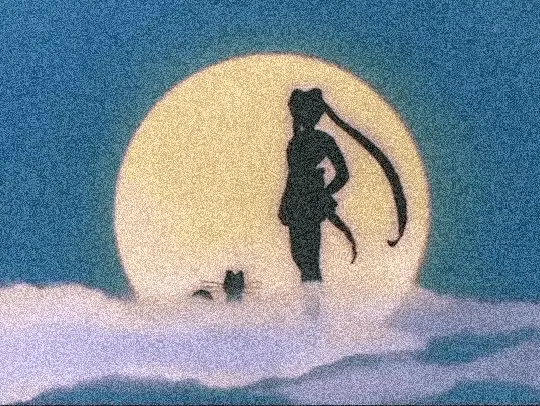
Thankyou for Reading through this today!
Have a great day and I hope you all stay for the next one😊❤️
#spirituality#spiritual enlightenment#spiritualawakening#witch community#astro community#astrology notes#witchy#witchery#astrology observations#astroblr#astrology#astro observations#astro notes#astronote#astrologer#astrology readings#astrology signs#12th house#8th house#astrology community#astrology blog#astro placements#birth chart#astrology chart#natal placements#natal astrology#natal chart#celebrity astrology#astro chart
805 notes
·
View notes
Text
SPYING YOUR FUTURE SELF

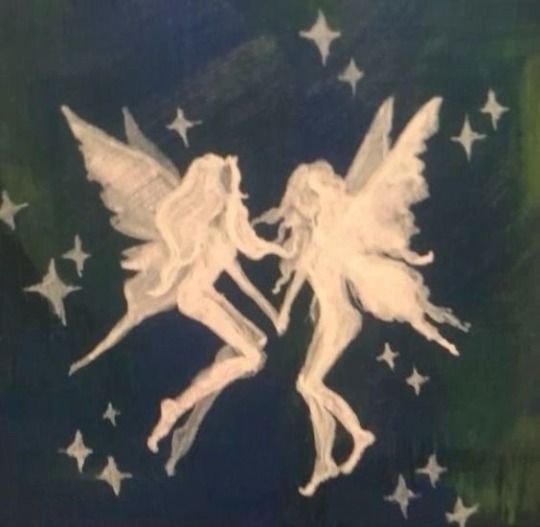

pile 1
"I've been through a lot of ups and downs, and I'll keep going through them, but I still have hope for a better future" I heard that from your future self, you're a blessed person but you also suffer so much! It's like there's karma (even though I don't believe it) that you're going through, somehow you suffer a lot, some have a very strong melancholy, it could even be depression here, that's something, but then I see you enjoying your own company, in peace and content and then starting to meet someone, but things are still cold, you need to go through one more thing, the universe doesn't want me to give too many spoilers…
pile 2
Oh daddy! I'M SORRY BUT THAT WAS THE FIRST THING THAT CAME TO MY MIND I EVEN LAUGHED, LET'S LAUGH HAHAHAH
Wow! You're going to meet someone very interesting, wow, take what resonates, for many here for the majority it's a man, but if you're not interested, it's a person who has a very strong masculine energy, some can be gender fluid, and wow, wow estoy caliente aquí, I see that this man will be the kind of man that Lana del Rey sings about, she would fall in love if she saw him hehehe, they can be much older than you, very lively, you're going to have the key to each other's hearts, he's a man with all the qualities, I heard everything a lady looks for in a gentleman, I'm hot now, please, I'm not flirting with your future love, but wow, he's a very well-structured person, you're going to be supported by him simply because yes, he's a very lucky person and you're going to feel it, he can work a lot, he's really going to be older, I'm with back pain here, you're going to meet them when they are transitioning, like in their 30s or 40s, something important in their lives, it's like a snake shedding its skin, a man who knows what to say, well-spoken, can be a journalist, a smoker, and have hobbies, you can meet each other on a trip, sorry, it wasn't supposed to be a love reading, but your future self gave the key to your heart to this person so it's someone important that they want you to know. Don't argue with me, argue with your future self. call me for a three-way relationship JUST KIDDING JUST KIDDING I KNOW THERE ARE PEOPLE WHO CHOSE THIS PILE AND ARE JEALOUS I'M PROVOKING YOU but call me if you want hehehe
pile 3
Wow, so many changes hahaha pun, wow you're going to build something very important and profitable for you, you can move to another country, you can have your own business or you'll know exactly what you want professionally and how to achieve that success, there'll be a lot of envy around you because of that, you'll be successful and people should want to be inspired by you but no they'll want what's yours :(, I see marriage for you here too, a reciprocal relationship with love. and quite traditional the ceremony, with a very pretty wedding dress, very vintage.
#tarot reading#pick a pile reading#pick a card#pick a card reading#tarot deck#free tarot#pick a pile#divination#witchy things#tarot cards#pick a photo#pick a picture#tarot#pac reading#pac tarot#kpop tarot#celebrity readings#oracle#oracle cards
858 notes
·
View notes
Text
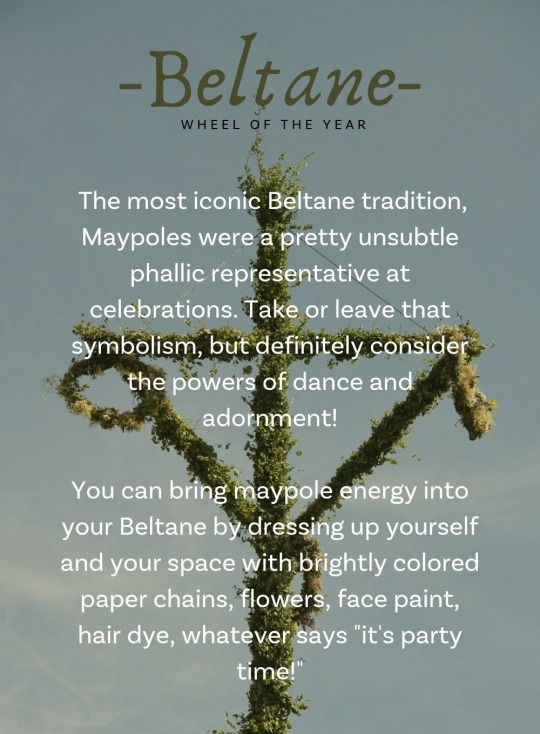
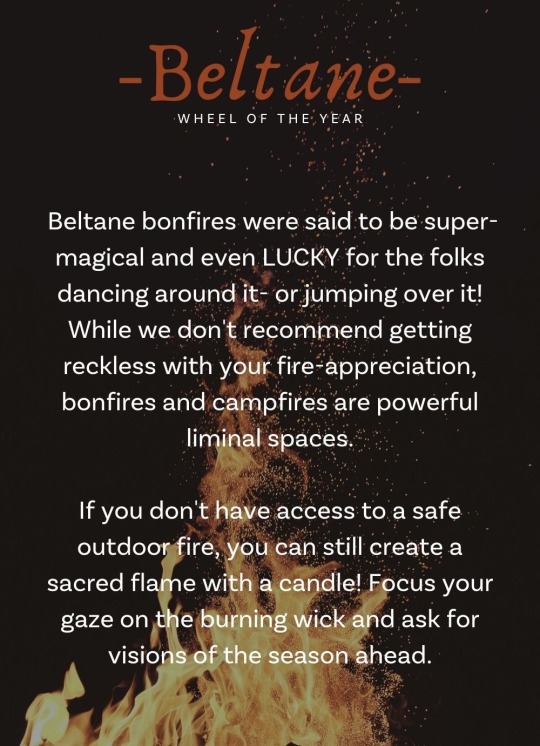
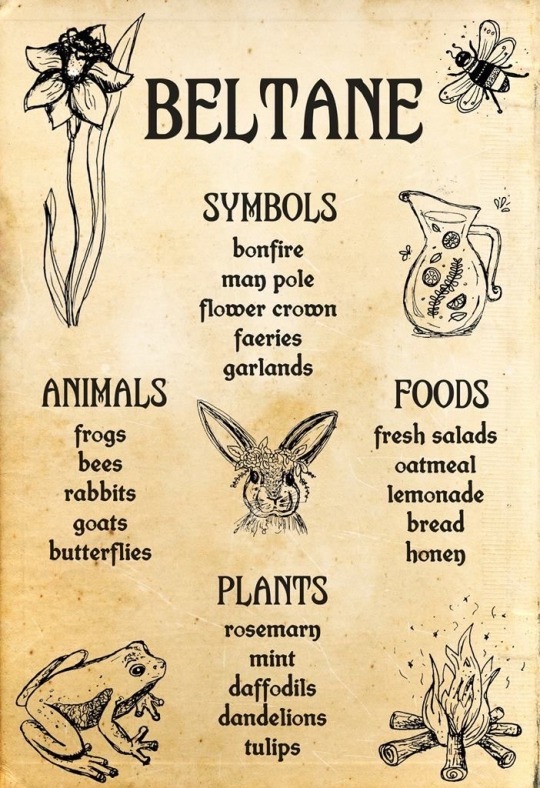
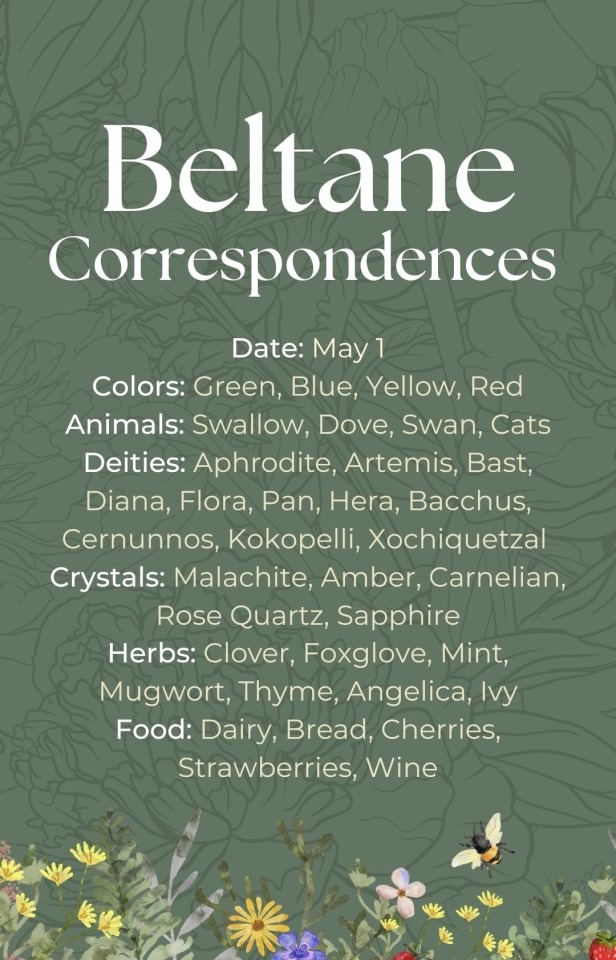
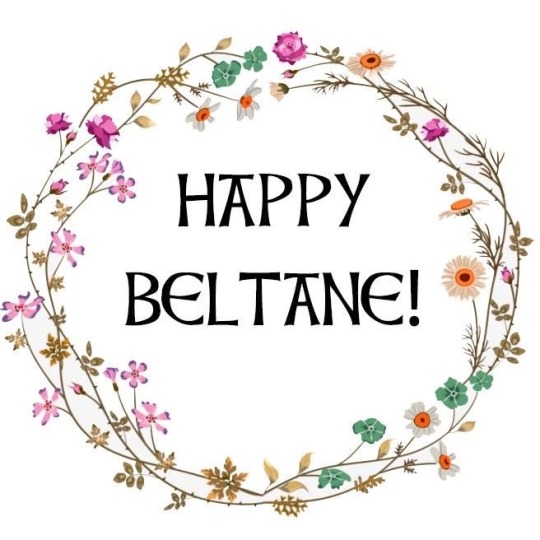
Happy Beltane Witches 😍
✨✨✨✨✨✨✨✨✨✨✨✨✨✨✨✨✨✨
Beltane is a Gaelic festival traditionally celebrated on May 1st.
It marks the beginning of summer and is associated with fertility, fire, and new beginnings.
It's a time to celebrate growth, abundance, and the coming together of communities.
Rituals often include lighting bonfires, dancing around maypoles, and feasting.
It's also considered a time for rituals to encourage fertility in crops, livestock, and people.
✨✨✨✨✨✨✨✨✨✨✨✨✨✨✨✨✨✨
#witchcraft#beltane#witchblr#witches#witchy#dark academia#witch aesthetic#witch#witch community#witchcore#green witch#celebrate#witch coven#Wicca#coven#witch familiar#cats familiar#familiar#maypole#spring#summer#whimsgoth style#whimsigothic#whimsicore#wandering witch#sea witch#easy witchcraft#witchy woman#witchy vibes#eclectic witch
220 notes
·
View notes
Text

Tarot cards are a tool often used for divination and self-reflection.
The magic lies in the symbolism and the interpretation of cards, offering insights into one's past, present, and future.
It's a subjective practice, relying on intuition and personal connection with the cards.
#tarot#oracle#witchblr#witchcraft#tarot cards#tarot reading#witch community#witchcore#witchy#dark academia#crystals#tarot community#celebrity tarot#tarot witch#free tarot#daily tarot#tarot deck#tarotblr#tarotcommunity#oracle cards#witches of tumblr#wicca#wiccan
183 notes
·
View notes
Text
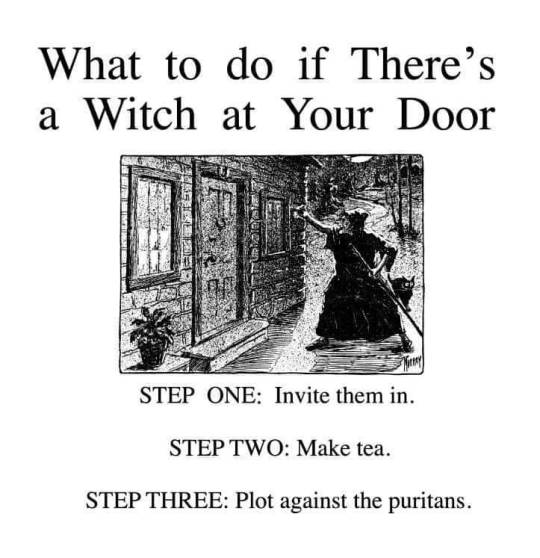
What to do if there's a witch at your door.
200 notes
·
View notes
Text
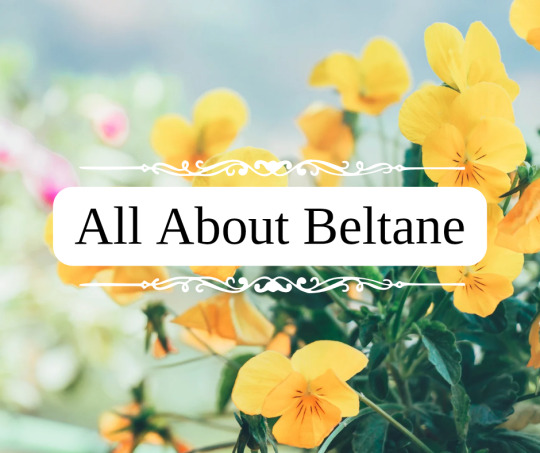
All About Beltane
Beltane, also known as Bealtaine in Irish, is a Gaelic holiday traditionally held on May 1st or the halfway point between the spring equinox and the summer solstice. It is believed to be named after the Celtic sun god Belenus. It was widely observed in Ireland, Scotland, and the Isle Of Man, and is one of the 4 major Celtic fire festivals. It is mentioned in even the earliest Irish literature and marked the beginning of summer and used as the marker to drive cattle into their summer pastures. Although public celebrations have mostly fallen out after the 20th century and many traditions have been mixed with other cultural holidays (such as the Roman holiday May Day), many Celtic Neopagans and Wiccans still celebrate, and many local traditions still continue, causing it to now get a cultural revival.
Traditionally, rituals were held to protect the livestock that moved pastures, along with crops, dairy products, and people, and to encourage growth. It was also important to appease the Aos Sí, or nature spirits/fairies, which were believed to be more active then.
According to early medieval texts in 908, druids would make two bonfires and drive cattle between them to protect them from disease. In the 18th and 19th centuries, bonfires continued to be an important part of the celebrations. Before the bonfires were lit, all hearth fires were put out, and then relit using the fire from the Beltane bonfires after the celebration.
Continuing into the 19th century, cattle were still driven over or between flames, or sometimes around the fires or made to leap over. The people themselves did as well for good luck and protection. Once the fires died down, people would dab themselves with the ashes and sprinkle them over their crops and livestock. Torches from the bonfires would also be brought home and carried around the home or boundaries, and also used to relight the hearth.
Food was also an important part of the Beltane festival, and usually included a feast of lamb, which, historically, was sacrificed. In 1769, it was written that a hot drink, called a caudle, made of eggs, butter, oatmeal, and milk was served, along with tossing a bit on the ground as an offering. A Beltane Bannock, a type of oatmeal cake, was also written to be important and had a few traditions around it.
In one tradition, the Beltane Bannock had nine knobs on it and each person would take the bannock and face the fire, proceeding to break off the knobs of bannock one at a time and tossing them behind their shoulder as an offering to the spirits for protection over their livestock and from predators (one for the cow, one for the sheep, one for the fox, etc). Afterwards, they would drink the caudle.
According to other 18th century writers, there was another Beltane Bannock tradition where the bannock would be cut into slices and one was marked with charcoal. The slices were then thrown into a bonnet and everyone would take one out while blindfolded. According to one writer, whoever pulled the marked bannock slice had to leap through the fire 3 times. According to another, the person would instead be pretend-thrown into the fire and for some time afterward people would talk about the person as if they were dead. This may have always been symbolic, or it may have been a tradition from a time where actual human sacrifice was used. This tradition was also near identical to May Day traditions that occurred in Wales and other parts of Europe, however.
Other traditions including flowers and plants were also observed, especially ones that evoked fire. Documents from the 19th century cite that yellow and white flowers, such as primrose, rowan, hawthorn, gorse, hazel, and marsh marigold was used and placed at doorways and windows. Sometimes they were strewn into garland, and other times they were made into bouquets, made into crosses, or fastened to them. They were also fastened to cows and milking/butter equipment.
Decorating a May Bush or May Bough was also a widespread tradition, and it usually consisted of a small tree or branch (typically hawthorn, rowan, holly, or sycamore) decorated with bright flowers, ribbons, candles, painted shells or egg shells from Easter, and more. In some traditions they also decorated it with gold and silver May Balls, which were hurling balls, that were then either given out to children or gifted to winners of a hurling match. It was also known as the only acceptable time to cut a thorn tree, as they were associated with fairies and may have also been a relic of worshipping tree spirits. It would either be decorated where it grew, or branches hung over windows, doors, roofs, and barns either inside or outside. Traditionally, it was the responsibility of the eldest of the house to decorate it.
The tree was usually left up until May 31st, but in some traditions it would be burned in the festival bonfire after singing and dancing around it. In Dublin and Belfast, May Bushes were brought into town and decorated by the whole neighborhood, with each neighborhood competing for the most beautiful bush. These competitions could also lead to neighborhoods attempting to steal others May Bushes, which eventually led to the May Bush being outlawed in Victorian times.
Appeasing the fairies was also a big part in Beltane celebrations, with many traditions revolving around offerings to the fairies and also warding them off, as there were many fears around them stealing dairy. One protection tradition was to leave 3 black coals under the butter churn. Another was to hang May Boughs on the milk pails. And yet another was to hang cattle tails in the barns. Flowers were also used to decorate the cattle's horns for good luck.
Farmers would also lead a procession around the boundaries of the farm and would "carry with them seeds of grain, implements of husbandry, the first well water, and the herb vervain (or rowan)", stopping at the four cardinal points of direction starting at the east, and performing rituals towards each direction at each stop. These processions were said to bring protection of their farm produce and encourage fertility. Some people also made the sign of the cross using milk on the backside of cattle for good luck.
As for fairy offerings, one tradition was to pour milk or leave food at places associated with the fairies such as "fairy trees". In Ireland, cattle were brought to "fairy forts" where a small amount of their blood was poured into the earth with prayers of the herd's safety. Sometimes, the blood would be left to dry and then be burnt.
Visiting holy wells was also a popular way to celebrate Beltane. Visitors would walk sunwise, moving from east to west, around the well while praying for health. They would then leave offerings of coins or cloth. The first water drawn from the well on Beltane was thought to be especially potent, and would bring good luck to the person who drew it.
Morning dew on Beltane was also thought to bring goodluck and health, and maidens would wash their face with it or roll in it at dawn or before sunrise on Beltane. It was also collected in a jar, left in sunlight, and then filtered. The dew was said to increase sexual attractiveness, maintain youthfulness, protect from sun damage, and ensure skin health during the ensuing year.
Modern day celebrations may vary from these more traditional festival activities, but many choose to incorporate or take inspiration from the traditions at least. Popular traditions still revolve around bonfires, feasts, decorating a May Bush, and focusing on protection and growth.
Beltane Associations
Colors - yellow, white, red, green
Food - lamb, milk and dairy, beef, bannocks, caudle, cakes
Animals - cattle, sheep, other herd animals
Items - primrose, rowan, hawthorn, gorse, hazel, marsh marigold, holly, sycamore, yellow and white flowers, flower garland, greenery, morning dew, dairy products
Crystals - citrine, fire agate, fire opal, carnelian, red and yellow jasper
Other - protection, fertility, good luck, fire, smoke, ash, sun, bonfires, farming
Ways To Celebrate
light a bonfire
jump over or dance around a bonfire
decorate a May Bush or May Bough
craft and hang flower garland
bake Beltane Bannocks
collect morning dew
create some caudle
ward and protect your home or property
leave offerings for the fairies
focus on protection, growth, and luck magic
enjoy time in the sun
have a feast
create a bouquet out of yellow and white flowers
visit a farm or petting zoo
#beltane#beltaine#bealtaine#celtic#gaelic#irish#scottish#pagan#witch#witchy#wicca#may day#magick#magic#magickal#grimoire#tradition#celebrate#bonfire#fire festival#witchcraft#spiritual#witchblr#witch community#paganism#pagan witch#celtic paganism#paganblr#about#dairy
110 notes
·
View notes
Text

🎨 ansleyalchemy
Happy Ostara Southern Hemisphere witches!
#witchblr#witches of tumblr#witchcraft#wicca#pagan#witchy#witchy things#magick#green witch#baby witch#Ostara#spring equinox#ostara sabbat#wiccan sabbat#witches sabbat#sabbat celebration
303 notes
·
View notes
Text
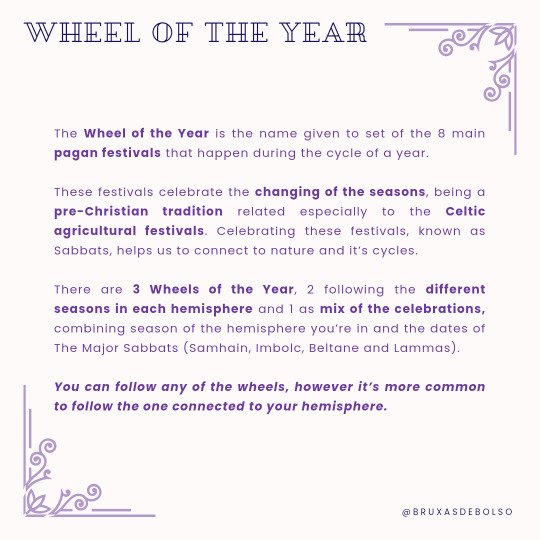




#witch#witchblr#witchcraft#witches#witches of tumblr#beginner witch#studyin witchcraft#tips#witchy tips#sabbats#wheel of the year#paganism#pagan#pagan celebration
81 notes
·
View notes
Text
Alternatives to breadmaking for this lughnasadh:
Boa buns - custard dessert ones, or savory dinner ones. Can be decorated. Bread-ish, but takes less time than bread.
Pasta making - or buying fresh pasta - celebrates the grains
Rice dishes - rice is just as much about abundance as wheat is
Baking with fruits like apples, berries, and late-summer melons
Tortilla making, if that fits with your culture better
Cornbread - homemade, or that 99 cent Jiffy mix.
#witchblr#witchcraft#witchery#witchy#sabbat#lugh#lammas#magick#sabbat celebration#kitchen witch#kitchen witchery#kitchen witchcraft#seasonal witch#eat seasonaly#green witch#lughnasagh#mabon#blessed lammas#blessed lughnasagh
215 notes
·
View notes
Text
FAME AFTER DEATH...
Leaving behind A legacy...
ASTROLOGY ANALYSIS [pt.I]
People who can't ever be forgotten easily after their death and are remembered throughout generations...

THESE NOTES ARE ONLY A STUDY OF MINE AND HAS/HAS NOT BEEN PROVEN YET, SO IF IT DOES NOT RESONATE WITH YOU, FORGIVE ME AS IT WAS ONLY A STUDY/OBSERVATION OF MINE.
I DO NOT PLAGIARIZE, COPY OR REWORD ANY OF MY FELLOW ASTROLOGY OBSERVERS POSTS AND I DEMAND THE SAME IN RETURN.
!Trigger Warning! There is Mentioning of sensitive topics such as de@th, the way a person died, etc so please don't read what you cannot endure.
If you are a person who gets easily triggered please first understand that just because this celebrity has the same placement as you do, does not have to mean you will face the same demise. Other aspects and placements play a major role as well.
I have noticed similar placements in the charts of legendary people who are recognised by the massive population of the globe, no matter how many generations pass. I will go through each one of them one by one.

Mainly I have noticed how every single celebrity who is remembered for a very very long time, even for generations together have:
• True node in 5th house,8th house or 12th house and varuna and/or fama in the 8th,12th or 5th house.
• Even True node and varuna and/or fama in the degrees 0°, 17°,29°, 11°, 22° can indicate being famous and recognise for ages and generations.
• Varuna in the 4rth house makes one famous after his/her death. Why? This is because the 4rth house does not only rule the home, the mother, our mind, family, etc.
The 4rth house is also the grave, the cellar, the basement, the crypt. I read about the more deeper parts of the 4rth house once and understood that because this house is at the lowest point in the chart, this house rules everything deep and underground as well.
This house is all about the memories, the ghosts, the private things, etc. So a person having this also become widely famous after his/her death. I've noticed that the people having Varuna in the 4rth and Pluto in the 8th with vertex is very much famous for the way they died or their defeat and also their secrets being revealed after their death.
✓ 5° is well known for giving short lasting fame whereas 0°,17°, 29°, 11°, 22° show long lasting impact and fame.

EXAMPLES:
1. ABRAHAM LINCOLN


• Abraham Lincoln, the 16th U.S President, is famous for his achievements in political areas but the way he faced his death is most famous world wide.
✓ Abraham Lincoln had his ascendant sign in 22° which is seen in the charts of many legends, because the degrees 0°, 22° and 11° are known as the degrees of the 'chosen ones'. He did have a great impact in history.
✓ He has his True Node in the 8th house which resulted in his lasting recognition even after his death.
✓ He also has Varuna in the 8th house conjunct with Mars. Now usually,I've observed that Mars, Pluto or Uranus in this house had given many famous legends either a painful or unexpected death. Abraham Lincoln died of assassination in a theatre. Again, he is known world wide for the way he died more than his achievements.
✓Also, I've observed that Uranus (also at times, Pluto or Neptune) in the 8th house also gave certain legends a sudden death, it was unexpected or was not seen coming. Even Abraham Lincoln had this placement (Uranus in the 8th house).

2. FRIDA KAHLO


• Frida Kahlo, a Mexican painter is widely known for her many self-portraits and gained world wide recognition for her work mainly after her demise.
✓Frida Kahlo had her Varuna in 29° which gave way for lasting fame throughout decades. Also, this asteroid being in the sign of Aquarius did result in her massive online presence where people still talk about her work and her unique art.
✓Her True node is conjunct Jupiter in the 12th house which once again, resulted in her massive recognition after her demise.
✓Saturn in pisces in the 8th house resulted in, according to reports, her death caused by the overdose of a drug, suicide or pulmonary embolism (blood continuously clotting which causes great harm to the body). Not sure what was the real cause but I do know that it was related to water in her body and Saturn being the reason for the clotting and making her body parts struggle to function well.
✓Her death is also mysterious because she had Cancer in the 12th and like I said before the 4rth house is also what's hidden deep underground..unclear information. And also her 8th house rulers in the chart (pisces=jupiter and neptune) were both in the 12th house, making her death a mystery again and not so clear.
[No wonder we are always told by our parents never to talk to anyone about personal family matters because it is one that should remain hidden as people can use that to their advantage in many ways (for the 4rth house)].
✓How could I forget? She is also a Leo ascendant native which is why she had gotten fame and recognition, even if it was mainly after her demise.

3. GAUTAMA BUDDHA (THE BUDDHA)


•Gautama Buddha, also known as 'The Buddha', is widely recognised and praised as the founder of Buddhism and The greatest Buddhist monk.
✓Again, Gautama Buddha is a Leo ascendant native which gave way for fame and recognition. Now his ascendant sign is in 4° which is Moon being in the 4rth house. The 4rth house like I mentioned before is the house of deeper areas like the grave, the cellar, etc. This is one more reason his massive fame could've spread even more than before after his demise.
✓ The Buddha, the great philosopher and Buddhist monk, has his True node in 0° in the 12th house which indicates having a lasting impact on several generations even after his death.
✓He also has Jupiter conjunct fama in the 8th house which again indicates his infinitely expanded fame, being world wide after his death.
✓His Varuna is conjunct Neptune in the 6th house which makes so much sense because Neptune is the original ruler of the 12th house, being the house of deep knowledge and spiritual awakening so he will be widely recognised for his spiritual awakening and his spiritual way of living, the way he served people and lived a very deeply spiritual life. 'The Buddha' literally means or translates to 'The awakened one'.
✓He also had Pluto in the 8th house and his death was not a long gradual process or took a long time. He ate something that made him ill and his death was not expected out of it but again because Pluto is here, the way he died is often made up of a lot of beliefs than truths.
I have observed that when Pluto sits in the 8th or 12th house, a persons death, cause of death or reason why she/he was killed (if he/she was) becomes more of a mystery. It is not exactly clear and people often just speculate on it with theories and beliefs.
✓The way The Buddha died is also very famous because of how unique it was to many due to many beliefs about his death being very spiritual among his followers. He again had pisces in the 8th house which resulted in an illness or problems with digestion.
✓He also had vesta asteroid in this house in pisces which indicates a very spiritual death. It is believed that He decided his time of death.
This is Random but The Buddha had his Moon in the 4rth house which made him a 'Mommas boy', aww. Lol. I mean, yes, we can see based on history that he lost his original mother, Maya devi, but he still loved and valued his foster mother and maternal-aunt, Mahapajapati Gotami.

4. PRINCESS DIANA


• Princess Diana, a member of the British royal family, was the first wife of Charles III (then Prince of Wales) and mother of Princes William and Harry. She was widely recognised and adored by the world for her activism and glamour.
✓Princess Diana had her True node in Leo in the 11th house which first of all results in her massive popularity internationally and her being an internet sensation for the longest period of time.
✓Princess Diana also has her Varuna in the 8th house conjunct Venus and hence she will always remain this beautiful glamourous icon for a very very very long time moving forward after her death.
>Princess Diana is still widely recognised as this natural queen who lived by her own rules (especially during that 'revenge dress' incident👇)



and seemed to not fit in well in the royal family of Britain. This is definitely the effect of True node conjunct Uranus in the 11th house. Like I mentioned in my previous post, natives having True node conjunct Uranus are very free spirited people and are hard to tie down.
>Her True node conjunct Mars in the 11th house also definitely was the reason she was such an active social activist who provided major support for those who needed help.
She was one of major reasons why the world became more aware of such rising health issues at that time, hence she's recognised world wide for her efforts.
>Since Mars is conjunct True node she was and is still widely famous for the controversies surrounding her life and her death. She is still widely discussed for the drama in her life and how she was treated very unfairly in the family and how so much of unjustifiable actions were taken against her in the royal family.
Her death is still considered a huge controversy and mystery even though most people are certain that she was murdered by the royal family. (Mars and Pluto in the 12th)




THE ASTEROIDS MENTIONED ABOVE: FAMA(408) and VARUNA(20000)
That's it for today everyone!
I hope you enjoyed reading through this post.
A part 2,3 and probably even more will be coming where I'll be analyzing legendary icons charts like:
Bruce Lee, Marilyn Monroe, Michael Jackson, Nikola Tesla, Chhatrapati Shivaji Maharaj, Adolf Hitler, Steve Jobs, Elvis Presley, and so many more!
So I hope you stick around for more, and I hope you have a great day ahead!💖
#spiritualawakening#spiritual enlightenment#spirituality#witchery#witch community#astrology observations#astro community#witchy#astroblr#astrology notes#astrology chart#astrology readings#astrology#astrology compatibility#astrology community#astrology content#astrology signs#astrology side of tumblr#astrology stuff#astro notes#astro observations#natal astrology#astrology asteroids#astrology aspects#astrology analysis#celebrity astrology#princess diana#frida kahlo#abraham lincoln
270 notes
·
View notes
Text




what will your glow up be like?
“Mirror, mirror, on the wall, who’s the fairest of them all?"
pile 1
something shiny, your glow up will be filled with sparkle and it can be literal or metaphorical, you may start to be interested in vibrant colors and use them, you may like to wear shiny accessories, you may adopt a new sparkle in your eyes, something will make you shine, regardless of what it is. you will become a more homely person, you may enjoy your own company more or get along better with people you live with, some here have bad relationships at home and may always want to run away but I see things have improved and you, for example, want to spend a weekend at home, I also see that some here will end a war with themselves, it reminds me of the song "war is over" which makes a lot of sense now at this time that you are seeing this (December, last days until the end of the year). I also heard "my body is my temple". maybe become famous in something for some people.
pile 2
WOW! Your glow up is not necessarily connected to you but to another person, which is very interesting, because this is not a reading about love, but I see you in a deep connection with someone and this relationship brings a rebirth, it is even connected to motherhood (or fatherhood), it is as if you were twin flames or soul mates, which would make sense because if it is a case of a soul mate or twin flame it would be the representation of you merging and generating something very beautiful for both of you. I see you going through all these phases and committing to each other in the end in a very poetically beautiful way like in romance movies… your innocence is also part of your glow up (it calls me to say that)
pile 3
look how beautiful! I see you getting rid of something too, it's like you've put down everything that was bad for you, imagine you living in a ruin, and that's bad for you, you know there won't be any growth there but you continue for your own reasons and emotions but suddenly you wake up one day and put it all down without looking back? It's BEAUTIFUL, it's a new birth, don't worry because after that, everything will be flowers.
#tarot reading#divination#witchy things#pick a pile#pick a card#pick a card reading#pick a pile reading#tarot deck#free tarot#tarot cards#pick a picture#pick a photo#celebrity readings#celebrity tarot#tarot readings#tarot#tarot community#oracle#oracles
382 notes
·
View notes
Text

Mists of Avalon
#mists of avalon#movie#pagan#celtic paganism#morganna#arthur pendragon#sorceress#priestess#witchy woman#witchy aesthetic#headdress#beltane celebration
50 notes
·
View notes
Text
Any spring/Ostara/Beltane themed pagan songs to recommend?
Let’s share!
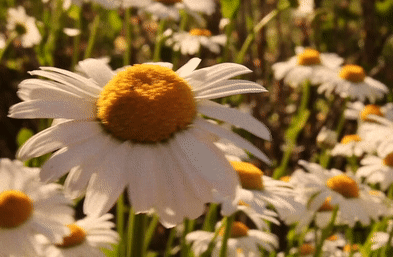
#doesn’t bother me if they’re wiccan#playlist#pagan playlist#music#spring#spring witchcraft#spring celebrations#spring equinox#springtime#witchcraft#witchy#witchy playlist#norse paganism#spirituality#polytheism#deities#paganism#norse gods#deity work
48 notes
·
View notes
Text

All About Mabon
Mabon is the name given to the pagan and Wiccan holiday that is celebrated on the autumn equinox. This year, it falls on September 22nd in the northern hemisphere. Although celebrations have been happening on the autumn equinox for centuries, Mabon as we know it today is a holiday coined and created around the 70s by new-age paganism and Wicca, named after the Welsh God. Although it doesn't have ancient roots, it does take inspiration from other autumn harvest festivals and participants have created beautiful ways to celebrate the neo-pagan holiday.
Just like other autumn equinox festivals, the main theme of Mabon seems to be one of transitioning seasons and giving thanks to the harvest and honoring nature. Many people consider it the pagan version of "Thanksgiving" as both holidays share many of the same symbolism and draw from seasonal items. Cornucopias play a big part in the symbolism of Mabon, representing a bountiful harvest, along with apples as well. Many people gather, feast, and spend time preparing for the long winter ahead as the days now grow shorter. Balance and scales also play a big role in celebrations due to the equinox, making it a great time to reflect on the give and take of life.
There doesn't seem to be one set way to celebrate Mabon due to its recent nature, so participants are encouraged to simply lean on the underlying themes of the holiday and celebrate in the ways that speak to them as they enjoy the universal shift in seasons.
Mabon Associations:
Colors - red, orange, brown, yellow, gold
Food - apples, squash, bread, corn, grains, root vegetables, grapes, nuts, pomegranates, wine, beer, cider, cinnamon
Animals - farm animals
Items - cornucopias, corn stalks, harvest tools, scales, acorns, autumn leaves
Crystals - amber, citrine, jasper, obsidian
Other - balance, change, thankfulness, reflection, letting go
Ways to celebrate:
have a feast
gather with loved ones and give thanks
write a list of everything you're grateful for
have a bonfire
decorate your home with Mabon and Autumn symbolism
harvest food from your garden
visit a farmers market
bake bread or pie
cook autumn themed food
write down goals for the coming season
create a Mabon altar
donate your time or money to those in need
go apple picking
cleanse and ward your home
stock up on food for winter
#mabon#magick#magickal#pagan#holiday#autumn#equinox#wiccan#neopaganism#wheel of the year#grimoire#sabbat#sabbath#magic#magical#witch#witchy#celebration#tradition#thanksgiving#fall#seasons#witchcraft#witchcore#spiritual#september#witchblr#eclectic pagan#paganism#paganblr
37 notes
·
View notes
Text
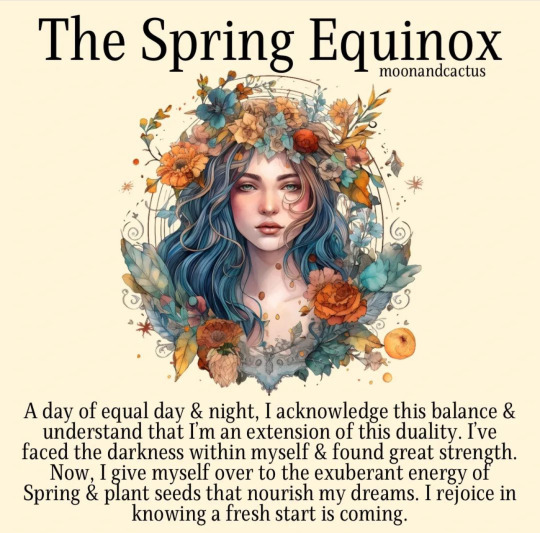
Moonandcactus
#ostara sabbat#ostara#spring equinox#witchblr#witches of tumblr#witchcraft#wicca#pagan#witchy#witchy things#magick#green witch#baby witch#witch community#sabbat celebration#sabbatic witchcraft#sabbatic craft#wiccan sabbat#witches sabbat
110 notes
·
View notes
Text
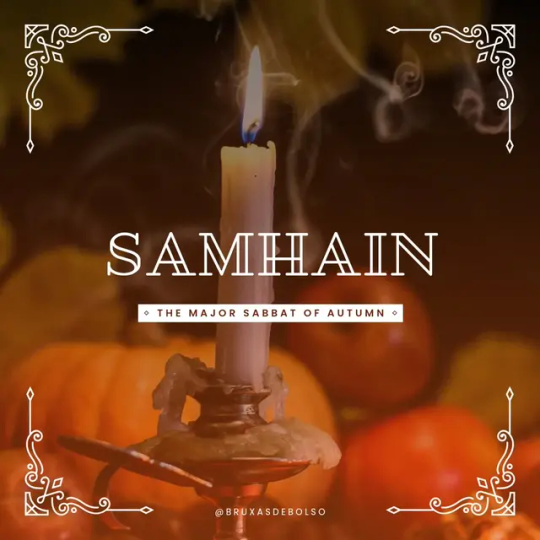
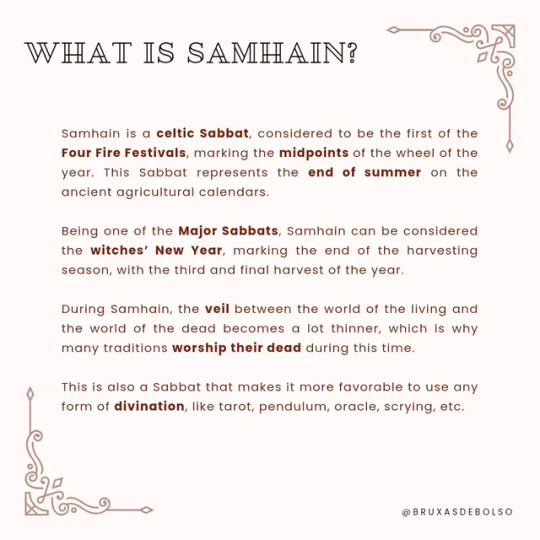

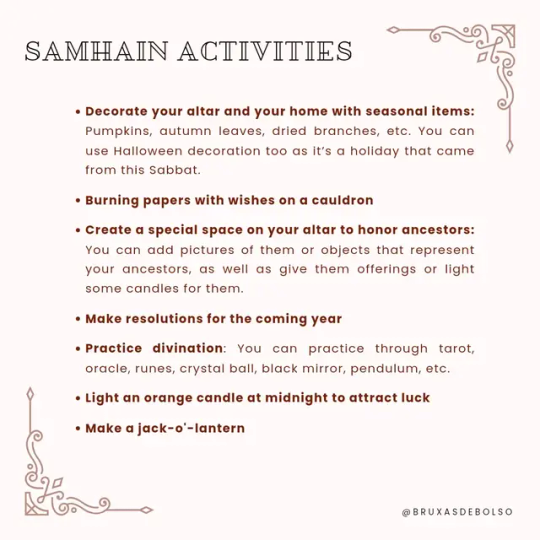
NOTE: The herb named as "blond" is actually bay leaf. Didn't notice the error in translation before lol 😬
#witch#witchblr#witchcraft#witches#witches of tumblr#beginner witch#studyin witchcraft#tips#witchy tips#sabbats of may#sabbat#sabbats#samhain#south wheel#wheel of the year#pagan celebration#pagan#pagan festival
32 notes
·
View notes